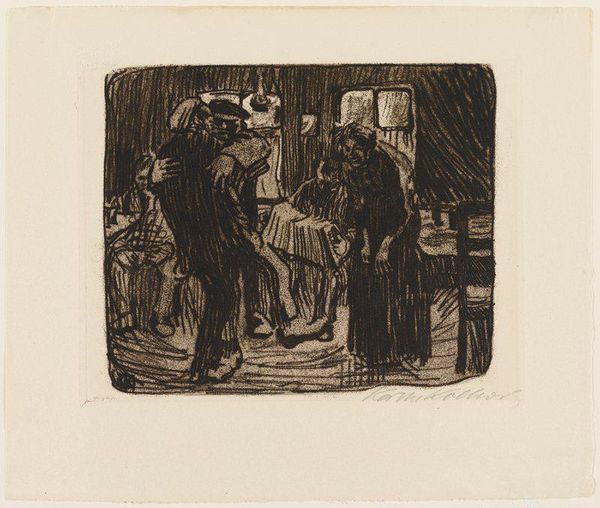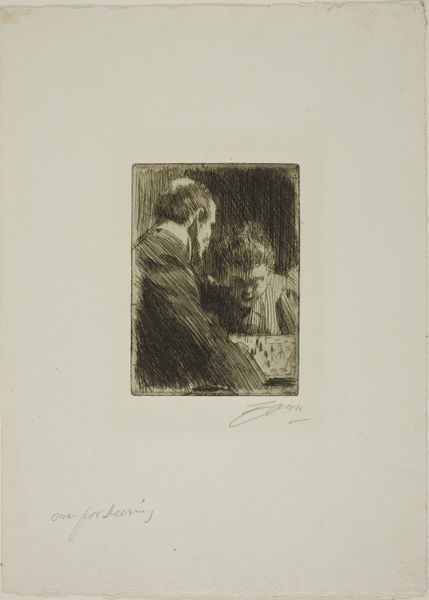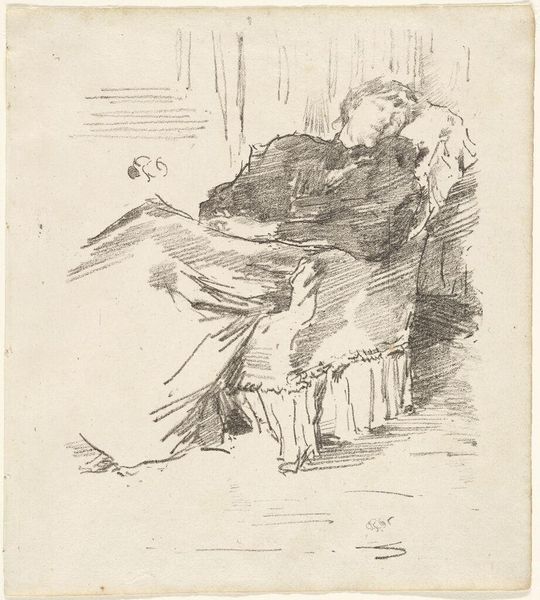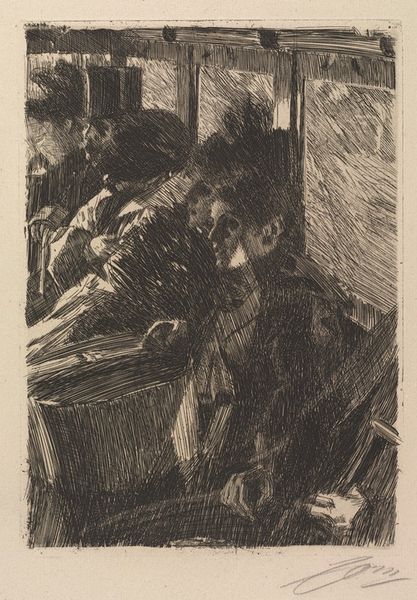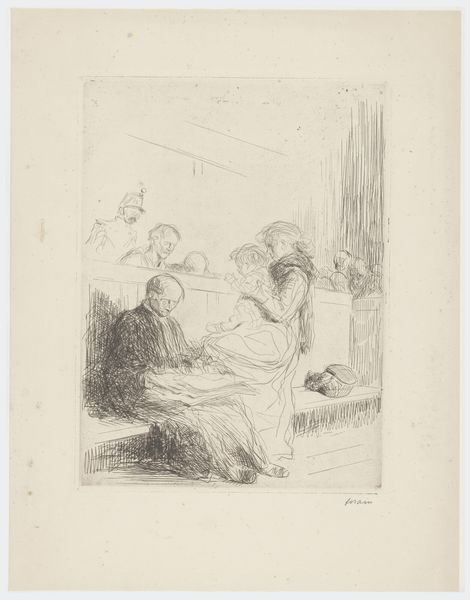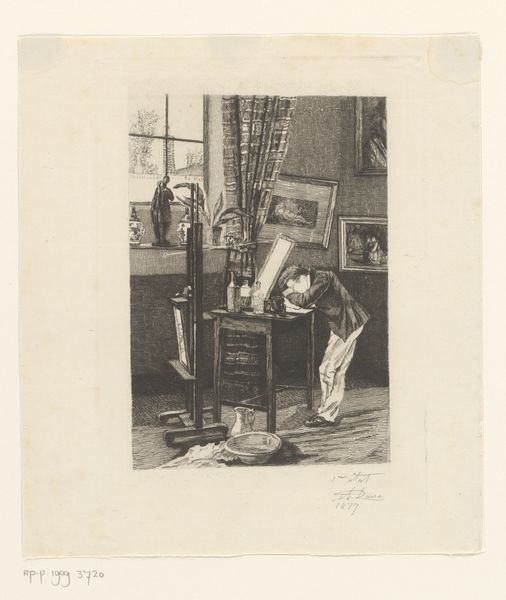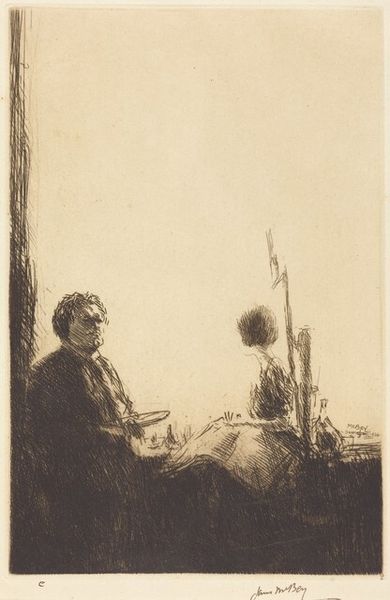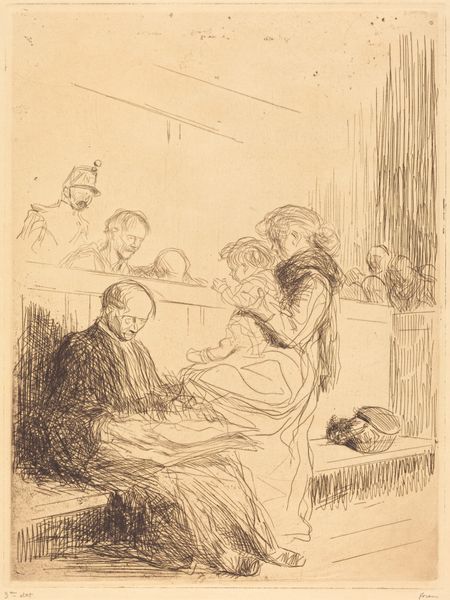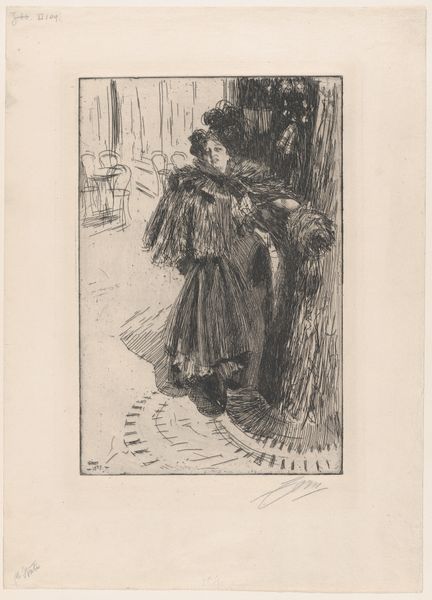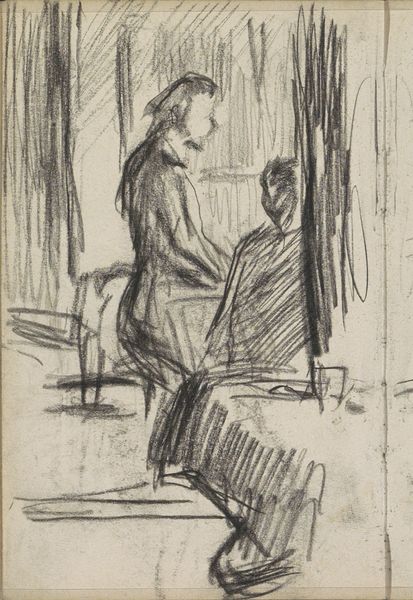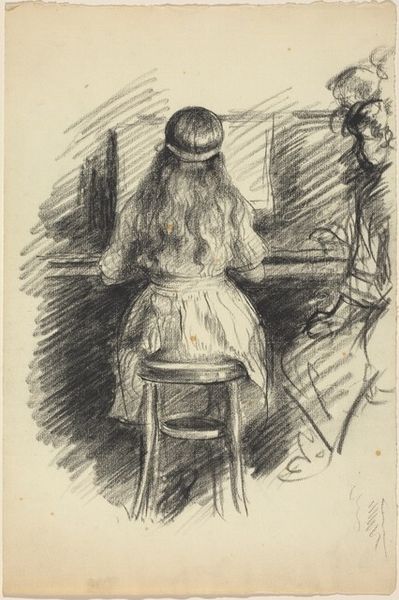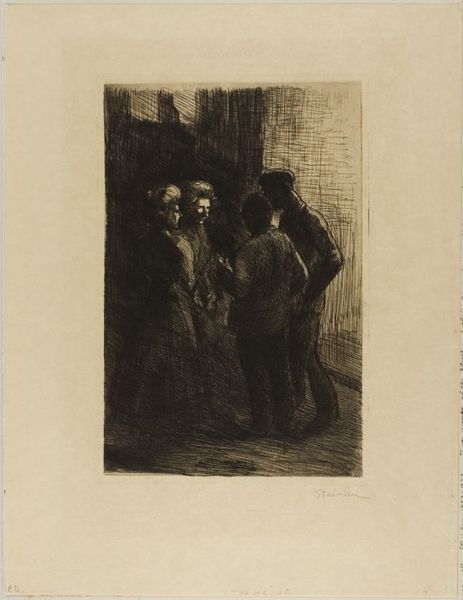
print, ink
#
portrait
#
ink drawing
# print
#
figuration
#
ink
Copyright: National Gallery of Art: CC0 1.0
Curator: Imre Reiner’s ink print, “Der Drehorgelmann,” created between 1936 and 1939, depicts a street musician and two onlookers. I’m immediately struck by the somber, almost mournful, expressions. Editor: Yes, there’s a distinct sense of melancholy hanging in the air. Looking at the printing itself, you can see the sharp lines defining the figures—each precisely delineating them— but it’s the sheer density of the ink that captures my attention. Reiner doesn’t shy away from the material richness that you can wring out of simple black ink and paper. It emphasizes the labor, not just the subject. Curator: Absolutely, that density underscores the gravity of the scene. The organ grinder appears burdened, both by the instrument and perhaps the gaze of the other figures, almost trapping him inside the performance itself. Editor: Right. This print embodies an almost relentless commitment to labor. Look at the way the machine's lines stack one over another; they compress the form, mirroring the way labor also compresses people's lives. It’s clear that the onlookers are almost more decoration, almost irrelevant given the depth that can be expressed with an honest look at production. Curator: And isn't it fascinating how Reiner uses the negative space? The pale background intensifies the shadowy quality of the foreground, suggesting that the Drehorgelmann inhabits a space both visible and obscured, existing on the margins of society and yet so painfully exposed. Editor: Exactly! You almost get a sense that those surrounding our organ player see him solely as someone whose back breaks under the weight of producing entertainment. The consumption is valorized while the material reality that makes the whole cycle go remains ignored. Curator: Looking at this image now, through our conversation, I'm touched by Reiner’s ability to imbue such a simple composition with so much emotional and societal weight. It speaks to the human cost that music and the labor of art sometimes entail. Editor: Right, in a culture driven by spectacle, sometimes slowing down and looking at the means that drive these grand performances gives you more depth of experience than getting caught up in enjoying a show ever could.
Comments
No comments
Be the first to comment and join the conversation on the ultimate creative platform.
